My paddle slices through the water as I move swiftly down the river. The sound of the water lapping against my paddle is soothing and I take a deep breath in as I absorb the beautiful landscape around me.
I hadn’t kayaked for years, decades in fact, so I wasn’t sure what I was getting into when I took my neighbour up on an offer to take me kayaking. She had several kayaks so she could lend me one, which made it hard to say no.
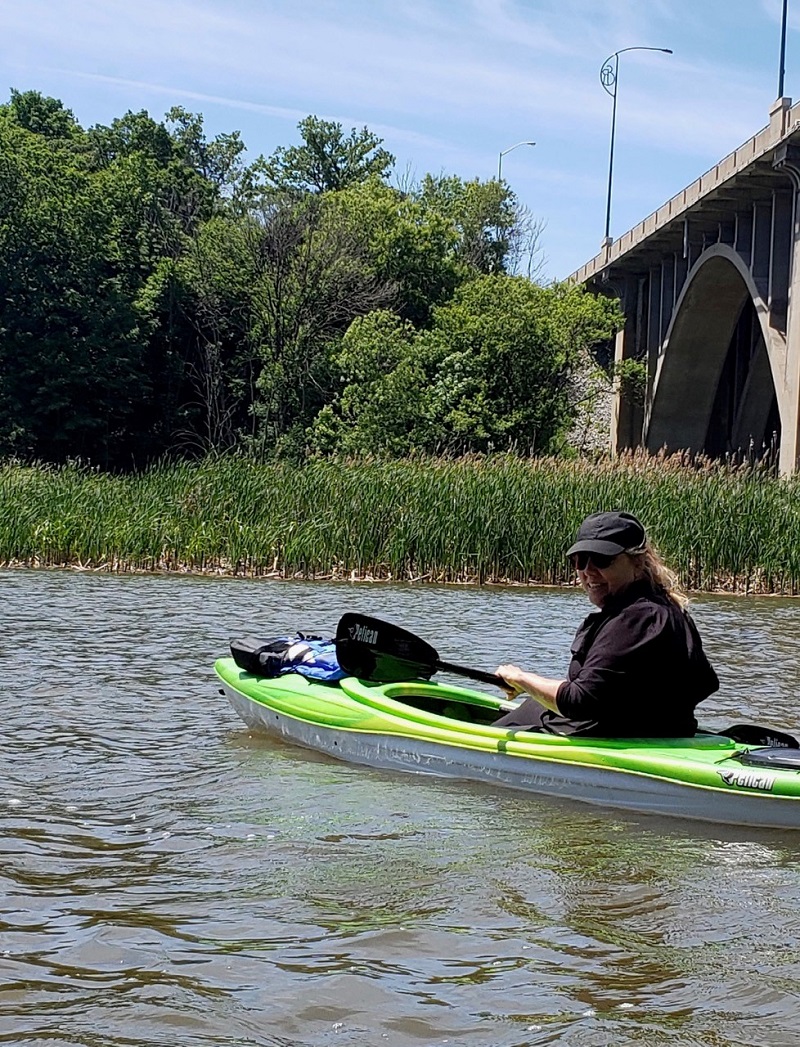
Writer Denise Davy paddling down the Credit River. Photo Denise Davy
There was something about kayaking that intrigued me right away. I live near Lake Ontario and longed to get into the water and l liked the idea of using a vehicle that required only arm power and no noisy motor.
A few days later, I found myself paddling down Bronte Creek and having the time of my life. Kayaking turned out to be the perfect pandemic activity. It got me outside and enjoying nature, it was good exercise but not over the top exhausting. Within a few minutes of being in the water, I feel like the world has slowed down and I love taking in the scenes of nature.
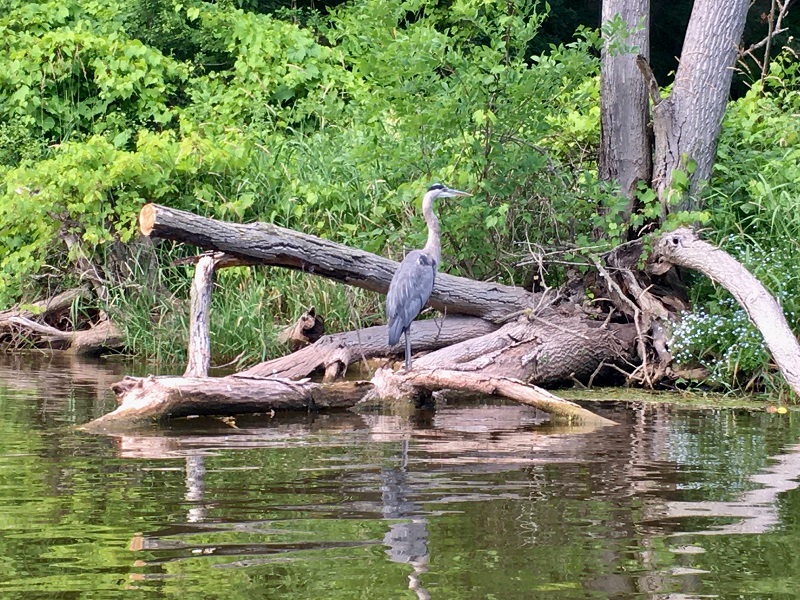
On Bronte Creek there are 3 or 4 heron who we see almost every time we go out. Photo Denise Davy
I’ve seen beavers, muskrats, herons, ducks and swans.
Kayaking is also one of the few group activities that can be done within the restrictions of social distancing. In fact, it’s impossible to not socially distance when you’re in your kayak. I’ve seen many families out kayaking together.
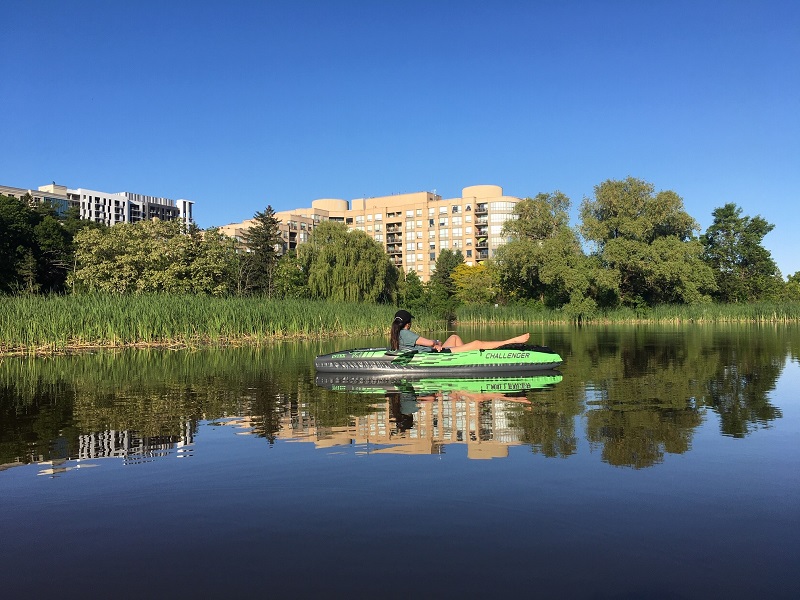
The Author’s daughter paddling Bronte Creek. Photo Denise Davy
As it turns out, kayaking is also surprisingly easy. The kayak my neighbour loaned me was a ten-foot hard shell that weighed around 50 pounds. It was easy to step into and very stable. The up and down dipping movement of paddling didn’t require a lot of exertion and, despite my lack of experience, when our paddling ended about two hours later, I felt like a seasoned pro.
I enjoyed it so much that within two weeks of first going out, I bought not one, but two kayaks. My main kayak is a ten-foot, green and white Pelican made from high-density polyethene. It has a comfortable seat and small space at the back that fits my water bottle, a bailer and tube of sunscreen. My second kayak is an inflatable called the Intex Challenger, which I bought because it’s super easy to transport and takes less than five minutes to inflate. Although I find it a little less stable than the Pelican, it makes up for it in comfort and is a great back-up for when my teenage daughter comes out with me or when she goes kayaking with a friend.
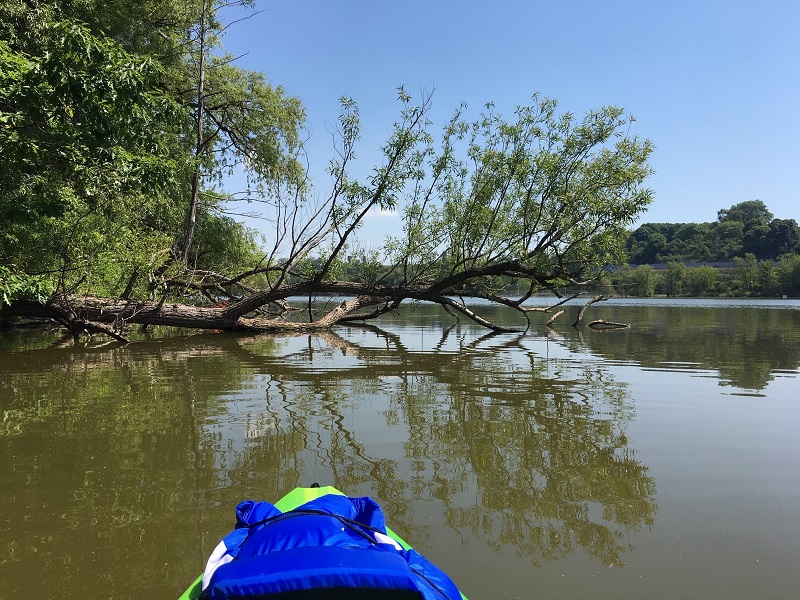
Cootes Paradise in Hamilton. Photo Denise Davy
I picked up a life jacket at Canadian Tire for $20, bailer, which cost $10 and includes a flashlight, rope and whistle, plus my water bottle and sunscreen. Choosing a roof rack was the most difficult part as my car doesn’t have roof rails. I ended up getting the Malone roof rack that straps inside of your car and the Malone EcoRack, which holds the kayak firmly with the help of straps. It works great.
All combined, with the kayak, roof rack, bailer and life jacket, getting on the water cost me around $750, not a bad price and a lot cheaper than any boat, plus I don’t have to pay docking fees. Also, consider that the hard plastic is virtually indestructible – any parent who has ever bought a Little Tykes playhouse will know what I’m talking about – so they’ll last for years!
It turns out I’m not the only one to discover kayaking. The stores can’t keep up with the demand and many are out of stock. Keep an eye out for used kayaks and ask around among friends if they have any for sale.
I live in the Hamilton Area, and whether you’re a first-timer or seasoned pro, there are many beautiful spots to hit the water here and beyond.
Bronte Creek has an easy access boat launch with a gentle slope and the creek s extremely easy to paddle as it’s a small, calm waterway. Because it’s bordered by a bevvy of trees and fields of bullrushes, it also attracts lots of birds and wildlife, including swans and herons.
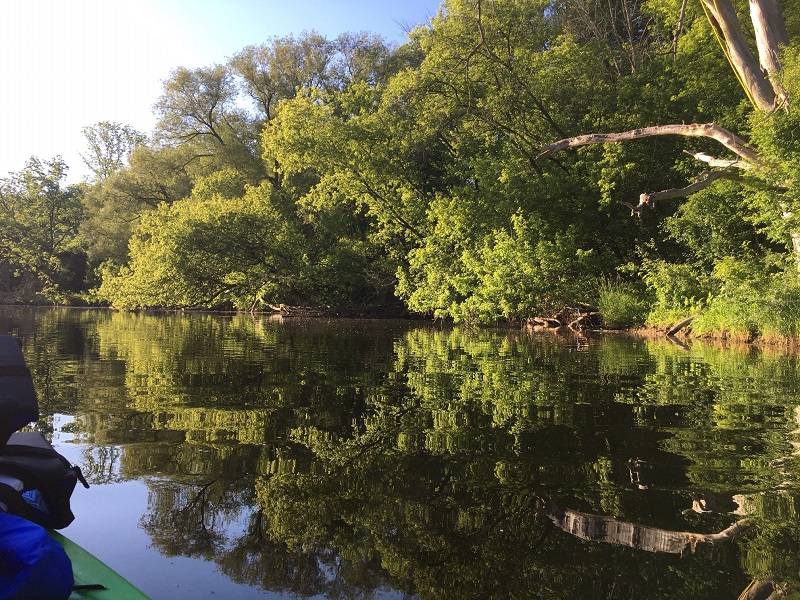
Often the water is so calm on Bronte Creek, it looks like glass. Photo Denise Davy
At the end of your kayaking outing, you can take a relaxing dip in the lake as there’s a nice strip of sandy beach by the harbour. Bronte Creek, which is also known as 12-Mile Creek, is great for fishing as well and during certain seasons, there are Rainbow Trout, Steelhead and Pacific Salmon.
The Sixteen Mile Creek in Oakville is another spot that has an easy to launch area. The creek is wider than Bronte, and although the water has been murky when we’ve been out, it’s still a good spot.
The Credit River in Port Credit, Mississauga, is a fabulous spot and much wider than Bronte. We launched near Lake Ontario across from Snug Harbour, and spent two and a half hours paddling the waters.
The launch area at Cootes Paradise in Hamilton was a little trickier as we had to get into our kayaks off a small wooden dock. It was worth it once we got into the water, as it was full of sites, including areas that were filled with beautiful flowering lily pads.
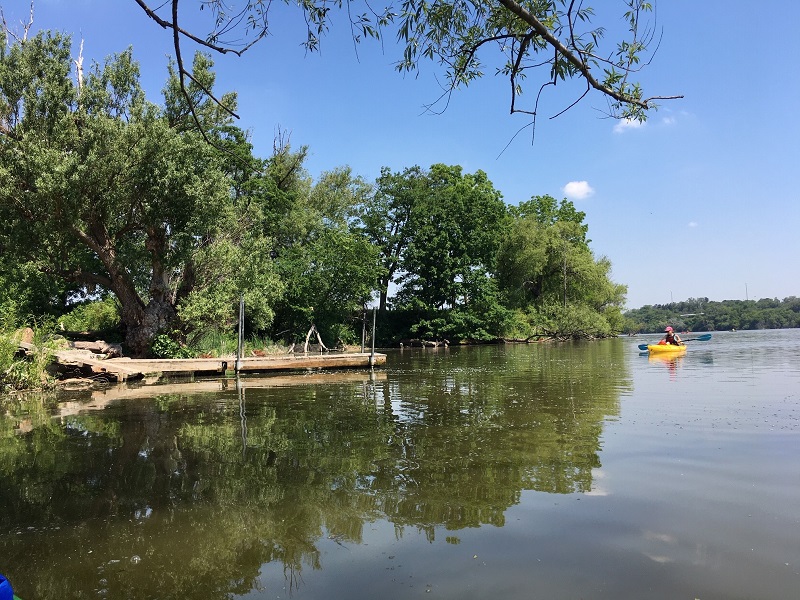
Cootes Paradise in Hamilton and the dock where kayaks launch from. Photo Denise Davy
Other kayaking spots including Rockwood Conservation Area and Valens Conservation Area, which both have large clean bodies of water and lots of beautiful landscapes. Many people enjoy paddling along the sheltered marshes of Long Point Provincial Park, which is a World Biosphere Reserve and has one of the largest bird and waterfowl migration areas in North America.
The Grand River in Haldimand County has been called the kayaker’s dream as it includes white-water currents for experienced paddlers as well as calmer water suitable for beginners. Another popular kayaking spot is the Big Creek, which is described by Southwest Ontario Tourism Corporation as; “a meandering waterway that winds south through Norfolk County toward Lake Erie’s Long Point Bay and is surrounded by Carolinian forests so thick and so filled with wildlife, it’s affectionately referred to as the Canadian Amazon.”
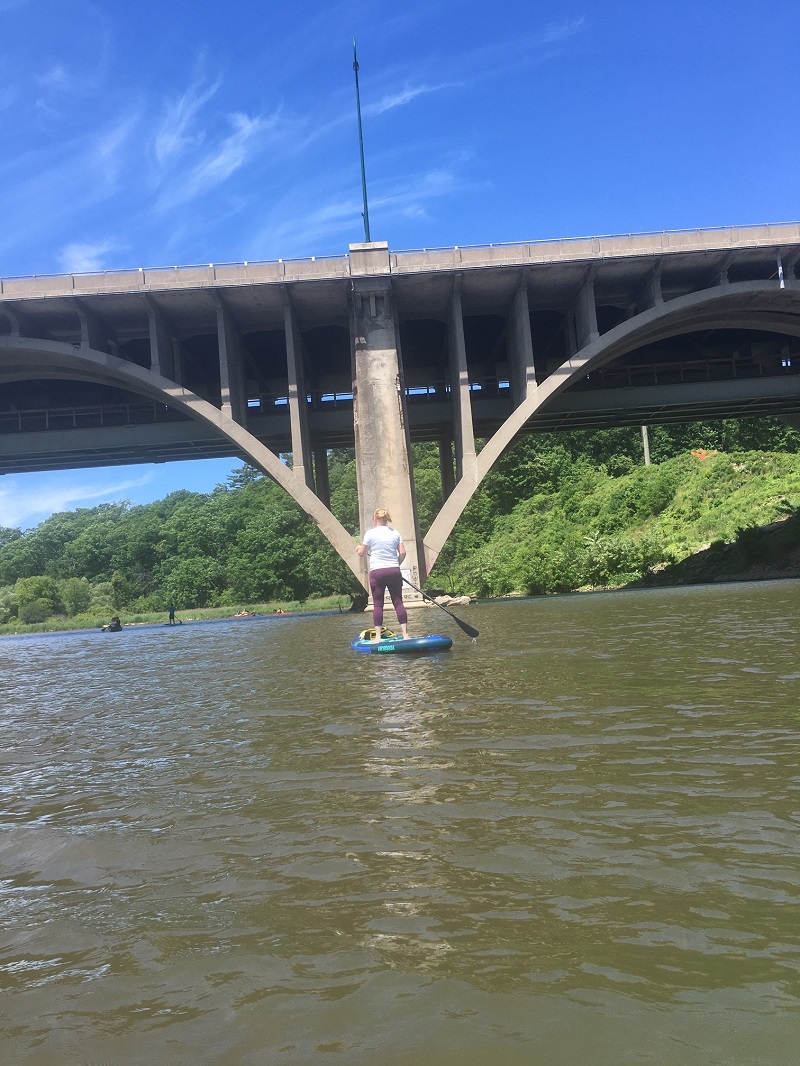
The Thames River is another good saying area that flows for 273 kilometres through southwestern Ontario, through Woodstock, London and Chatham and has different levels, from rough rapids to calmer waters.
In Toronto, you can rent a kayak at Harbourfront Canoe and Kayak Centre which also offers lessons. Toronto Adventures has kayak, canoes and SUP (Stand-up paddleboards) for rent and also offer lessons and guided tours down the Humber River.



